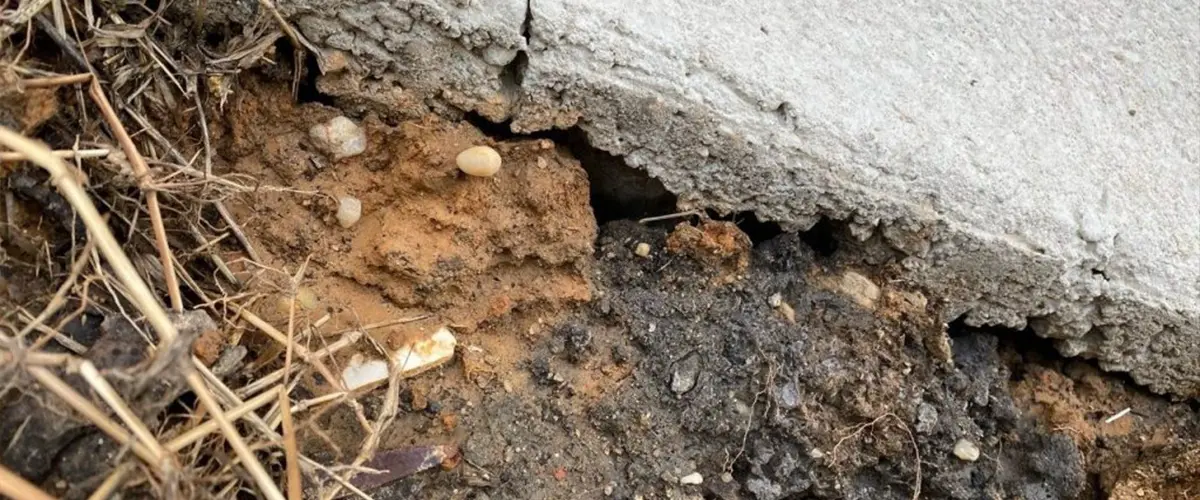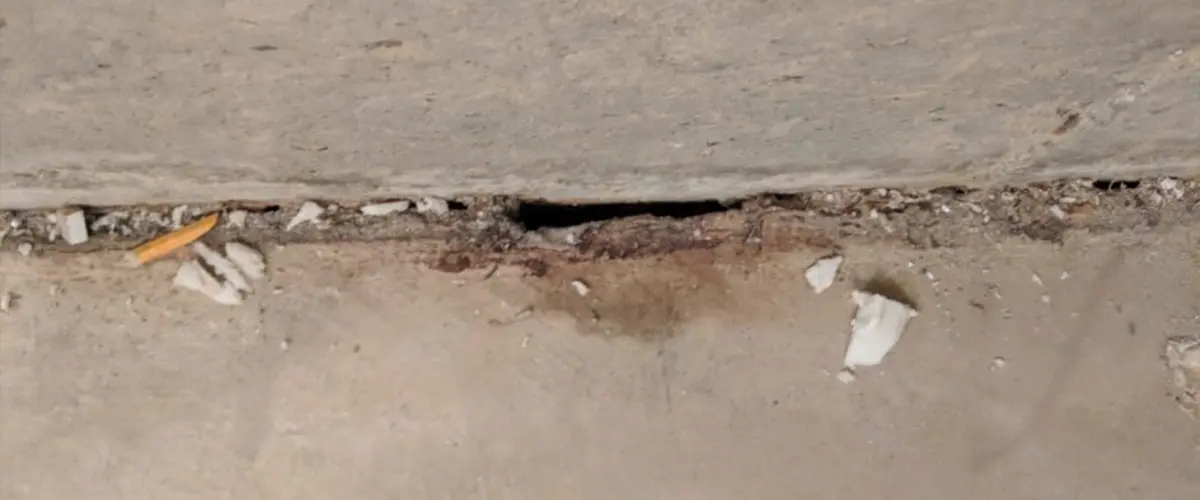Where is the rainwater going? Is it going away from your home? Is the water going towards your home? Any drains clogged? Does the rainwater have a place to escape?
How far the downspouts extend away from your home is very important. During a waterproofing inspection, we check the water that discharges from the downspout. Is the water flowing away from the foundation?
If not this will be our first correction.

The Exterior Inspection
Rainwater should flow away from your home’s foundation. In some cases where the yard has a negative grade, the rainwater flows directly back towards the foundation. The picture below is a small sample size of the damage water can cause.

In a perfect world, window wells need to be free of debris and have moisture rocks installed to allow the water to flow in the drain. Unfortunately, most window wells we encounter are filled with debris, vegetation growing out of it, and no drain.
They are often forgotten as a threat when it comes to keeping water out of your home.
Size matters, especially for stairwell drains. If the drain is too small, it will not be able to handle heavy rainfall.


The Interior Inspection
During the interior portion of the inspection we are looking at four key areas:
We see the picture below a lot. A basement unfinished basement with the walls and floor painted. However, if you look closer at the picture, you will find white paint dust on the floor. This white dust is from water pressure (hydrostatic pressure) pushing on the foundation wall.

If the basement is finished, we have ways to verify if water is intruding. Thermal imaging shows water is entering the basement.


The potential for mold happens when water intrudes on porous building materials, i.e., drywall, wood, etc. Water intrusion is the problem and the picture above is the result.





The Sump Pump Crock/Sump Pump is the central location to see how the system is performing. If the water is clean, free of debris, and at a sufficient level, more than likely, the system is working well.
Mud in the crock is a sign that the system is not performing at an optimal level. The sump pump should be running without any obstructions, i.e., debris, leaves, or mud.
Once the inspection is over, you will know where the water is entering your home and why. Moving forward with waterproofing your basement, know the cost.

